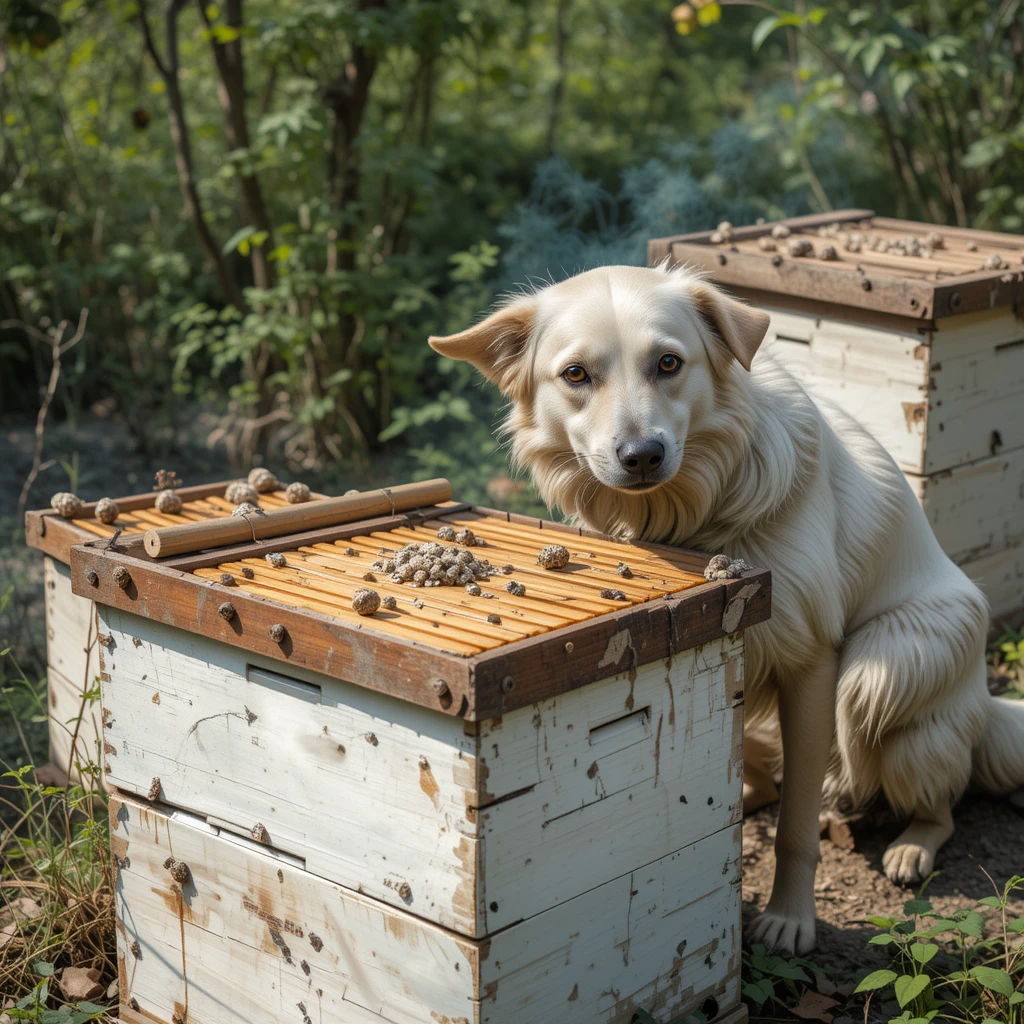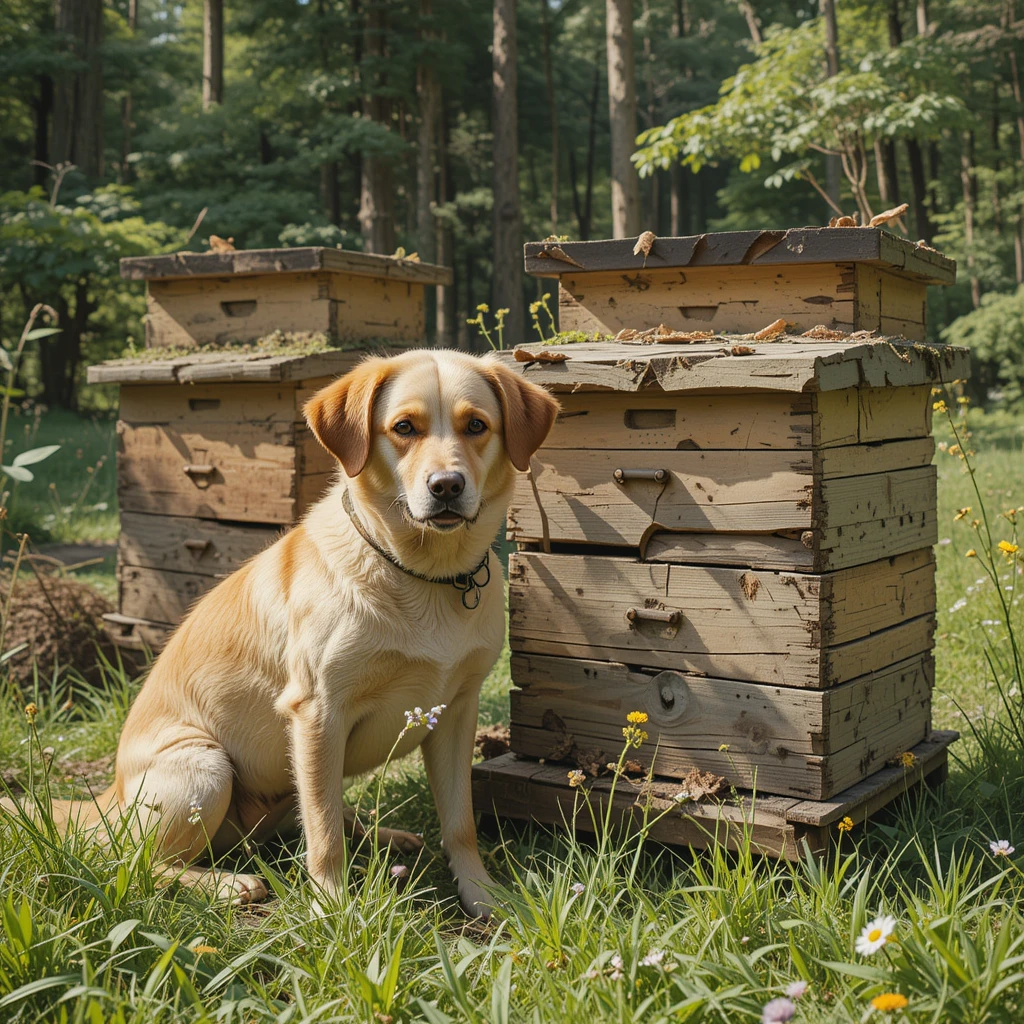As a dog owner, seeing your pet suddenly break out in bumps or welts can be distressing, but it’s more common than you might think. These bumps are known as hives, or urticaria, and although they might look alarming, they’re often a result of your dog’s immune system reacting to something they’ve encountered, much like human allergies. In this article, we’ll explore the causes, symptoms, and treatment options for dog hives, helping you identify the condition early and ensure your dog stays comfortable.
Table of Contents
What Are Dog Hives?
Hives in dogs are an allergic reaction that manifests as raised, red, itchy welts on the skin. These welts can appear suddenly and vary in size, shape, and location. Most often, hives are caused by the body’s immune response to an allergen. When your dog comes into contact with something their immune system deems harmful, their body releases histamine, causing blood vessels to leak fluid and leading to the familiar bumps and swelling.
Although hives can be itchy and uncomfortable, they are usually not life-threatening. However, if not managed properly, the condition can escalate, especially if your dog is allergic to something more severe. Therefore, understanding the causes, symptoms, and available treatment options is key to helping your pet feel better quickly.

Common Causes of Dog Hives
Just like people, dogs can develop allergies to a wide range of things. The most common causes of hives in dogs include:
- Food Allergies: Just like us, dogs can be allergic to certain foods. Common allergens in dog food include chicken, beef, dairy, grains, and artificial additives. If your dog recently switched food or is on a new treat, this could be the cause of the hives.
- Environmental Allergies: Pollen, dust mites, mold, and other environmental allergens can trigger hives in sensitive dogs. This is especially true during the changing seasons when allergens are at their peak.
- Insect Bites and Stings: Fleas, bee stings, or wasp bites can trigger an allergic reaction in some dogs. Insects that bite and inject venom or saliva can lead to localized reactions, causing red, swollen welts on your dog’s skin.
- Medications: Just like humans, dogs can develop allergic reactions to medications or vaccines. If your dog has recently started a new medication or had a vaccination, this might be a potential cause of the hives.
- Contact Allergens: Sometimes the cause of hives may be external. Shampoos, lotions, household cleaners, or even plants can cause a contact reaction in your dog, especially if they have sensitive skin.
Recognizing the Symptoms of Dog Hives
Identifying hives in your dog is the first step in managing the condition. Hives can appear in various forms, but there are some common signs to watch out for:
- Raised Bumps or Welts: The most visible symptom of hives is raised, red bumps on your dog’s skin. These welts may appear anywhere on your dog’s body, although they’re commonly seen on the face, neck, belly, and legs.
- Itching and Scratching: Dogs with hives often scratch or bite at the affected areas. The itching can be intense, which may cause your dog to become restless or agitated.
- Swelling Around the Eyes and Lips: In more severe cases, hives can cause swelling around your dog’s eyes, lips, or face, making them look puffier than usual.
- Redness or Irritation: The skin around the hives may look inflamed, red, or irritated. This can be a sign of an allergic reaction taking place beneath the surface.
- Changes in Behavior: Your dog may become more uncomfortable than usual, pacing around or trying to alleviate the itch. In some cases, they may be less active or seem more tired than usual due to the discomfort.

How to Treat Dog Hives
Most cases of hives in dogs resolve with proper treatment, especially if you can identify and avoid the allergen causing the reaction. Treatment options for dog hives vary depending on the severity of the reaction:
- Remove the Allergen: The first step in treating hives is to eliminate the source of the allergic reaction. If your dog has a food allergy, you may need to switch to a hypoallergenic or limited-ingredient diet. If environmental allergens are the problem, try to limit your dog’s exposure to pollen, dust, or other triggers. If insect bites are the cause, consider flea treatments or keeping your dog indoors during peak insect activity.
- Antihistamines: A common treatment for hives in dogs is antihistamines, which help block the release of histamines and reduce the swelling and itching. However, not all antihistamines are safe for dogs, so it’s important to consult your vet for the correct dosage and type.
- Steroids for Severe Reactions: If your dog is experiencing a more severe allergic reaction, steroids may be prescribed to reduce inflammation and relieve symptoms more effectively.
- Topical Treatments: If the hives are causing significant itching, topical treatments like soothing shampoos with oatmeal or aloe vera can provide relief. You may also use a cool compress to reduce swelling and alleviate discomfort.
- Veterinary Care: If your dog’s hives do not improve after home treatment, or if the hives worsen or are accompanied by difficulty breathing, vomiting, or diarrhea, it’s essential to seek professional veterinary care immediately. Severe allergic reactions can lead to anaphylaxis, which requires immediate medical attention.
Preventing Future Hives in Dogs
Prevention is often the best approach, especially if your dog is prone to hives. While it may not always be possible to completely eliminate all allergens, you can take some steps to reduce the risk:
- Monitor Your Dog’s Diet: If your dog has food allergies, work with your vet to find a suitable hypoallergenic food. Avoid giving your dog treats or food scraps that might contain allergens.
- Control Fleas and Parasites: Regular flea and tick prevention is essential in preventing insect bites that can lead to hives. Ask your vet about the best flea treatments for your dog.
- Maintain a Clean Environment: Keep your home free from dust, mold, and other allergens. Regular cleaning can help reduce environmental triggers, particularly if your dog has seasonal allergies.
- Limit Exposure to Potential Triggers: If your dog’s hives are related to environmental allergens, try to limit outdoor time during peak allergy seasons or keep windows closed during high pollen periods.

When to See the Vet
Although most cases of hives are manageable at home, there are situations when you should seek veterinary help. If your dog’s symptoms worsen, persist for several hours, or if you notice swelling in the face, neck, or throat, it’s important to see a vet. Anaphylactic shock, though rare, can be life-threatening and requires immediate treatment.
Additionally, if your dog has any of the following signs, contact your vet:
- Difficulty breathing or swallowing
- Vomiting or diarrhea
- Excessive lethargy or discomfort
- Hives that don’t go away after treatment
Conclusion
Seeing your dog break out in hives can be a concerning experience, but with a bit of knowledge and prompt action, most cases can be treated effectively. Understanding the causes, symptoms, and available treatment options can help ensure your dog stays comfortable and healthy. If in doubt, always consult with your vet to get the best advice and care for your furry friend. By staying vigilant, you can help your dog avoid future allergic reactions and keep their skin healthy and happy.
